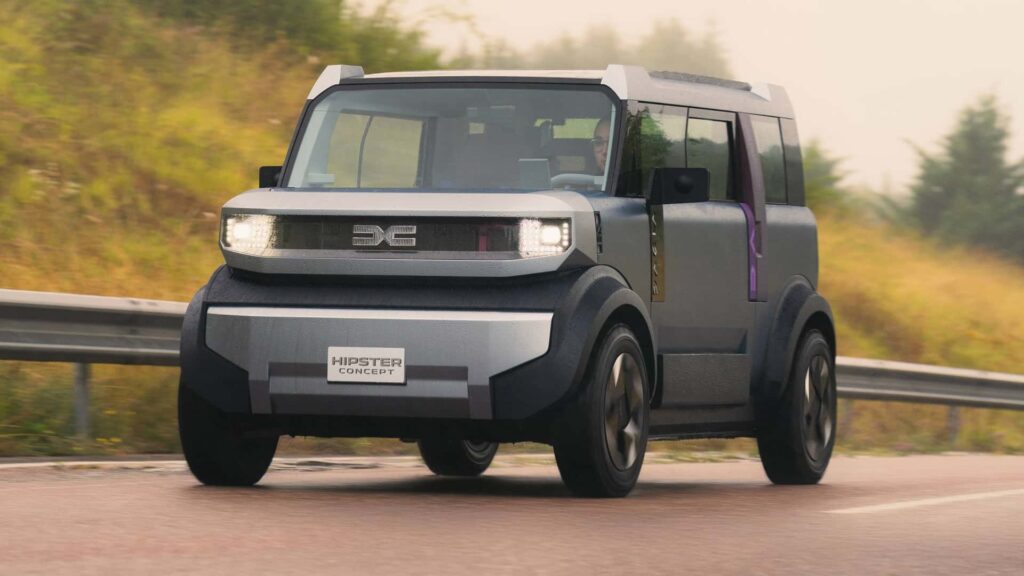The Dacia Hipster Concept is an electric vehicle (EV) that pushes simplicity to the extreme. This concept car from Renault-owned Romanian automaker Dacia is all about minimalism and cost-efficiency. Unlike traditional EVs, the Dacia Hipster Concept does away with unnecessary features like infotainment screens and speakers.
Measuring just 118 inches long, 60 inches high, and 61 inches wide, the Dacia Hipster Concept is compact and efficient. Despite its small size, Dacia claims that the two-door concept can comfortably accommodate four adults. By maximizing interior space and eliminating non-essential components, Dacia has created a car that prioritizes functionality and practicality.
The design of the Dacia Hipster Concept is focused on simplicity. With only three painted parts – the front of the car and the side door entry elements – the overall aesthetic is clean and uncluttered. The interior features paper-thin seats covered in mesh fabric, eliminating the need for bulky seating. There is no infotainment screen or speakers, with the option for owners to use their smartphone and a Bluetooth speaker instead.
In terms of storage, the Dacia Hipster Concept offers a small 2.4 cubic feet trunk, which can be expanded to 17.6 cubic feet by folding down the rear seats. The rear headrests swivel from the C-pillars, allowing for a flat-folding rear seat. Additionally, there are Isofix mounting points for a child seat in the back.
One of the standout features of the Dacia Hipster Concept is its lightweight construction. Dacia claims that the concept is 20% lighter than the Spring city car, resulting in lower energy consumption during both production and operation. This allows for a smaller battery size, further reducing costs and environmental impact.
While Dacia has not disclosed the exact range of the Hipster Concept, the emphasis on daily driving distances suggests that it is designed for urban commuters. The transition from concept to production model is inevitable, and Dacia’s commitment to cost-effectiveness is evident in its approach to design and engineering. The upcoming second-generation Spring city car is expected to follow a similar philosophy, promising an affordable and practical electric vehicle option for European consumers.

